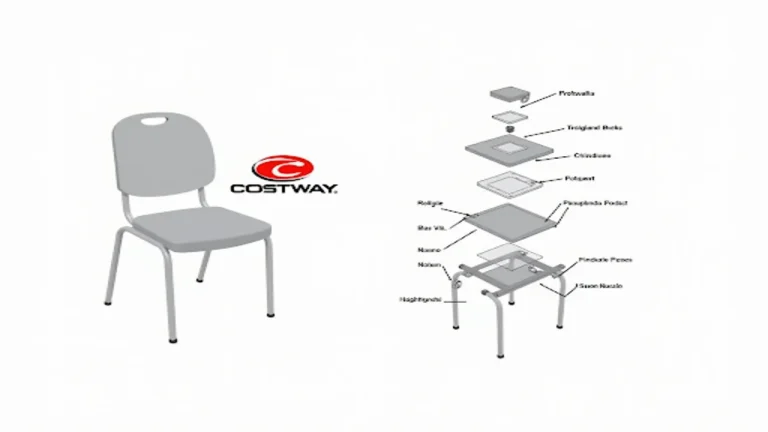Gardenedgingexpert.com/Finance

Introduction
Creating a beautiful and well-defined garden requires careful planning and investment. One of the critical aspects that homeowners often overlook is the financial planning involved in garden edging projects. At gardenedgingexpert.com/finance, we provide comprehensive insights into budgeting, financing options, and strategies to maximize the return on investment (ROI) for your garden edging endeavors. This article aims to guide you through the financial intricacies of garden edging, ensuring your project is both aesthetically pleasing and financially sound.
Understanding Garden Edging Costs
Material Expenses
When planning your garden edging project, the choice of materials significantly impacts your budget. Materials range from budget-friendly options like plastic and wood to premium choices such as stone and metal.
Plastic and Wood
Plastic and wood are cost-effective materials that offer a variety of styles and finishes. Plastic edging is durable and resistant to weather conditions, while wood provides a natural look but may require more maintenance.
Stone and Metal
Stone and metal edging are more expensive but offer a longer lifespan and a high-end aesthetic. Stone, such as granite or slate, adds a timeless quality to your garden, whereas metal, like steel or aluminum, provides a modern and sleek finish.
Labor Costs
Labor costs can vary widely depending on whether you opt for a DIY approach or hire professionals. While DIY projects save money, they require significant time and effort.
DIY vs. Professional Services
DIY projects allow you to control costs and materials, but they require a level of skill and time commitment. Hiring professionals, on the other hand, ensures quality work but at a higher cost. It’s essential to balance your budget and desired outcome when making this decision.
Maintenance Expenses
Maintenance is a crucial factor in the long-term cost of garden edging. Different materials require varying levels of upkeep, impacting your overall budget.
Regular Maintenance
Materials like wood may need regular treatments to prevent rot and insect damage. Stone and metal edging generally require less maintenance, making them cost-effective in the long run.
Unexpected Repairs
Plan for unexpected repairs that may arise due to weather damage or wear and tear. Setting aside a portion of your budget for these contingencies can prevent financial strain later.
Budgeting for Garden Edging
Creating a Realistic Budget
A realistic budget is the foundation of a successful garden edging project. Consider all potential costs, including materials, labor, and maintenance, to avoid overspending.
Prioritizing Costs
Prioritize your spending based on what aspects of your garden are most important to you. Decide whether you want to invest more in high-quality materials or allocate funds for professional installation.
Comparing Costs: DIY vs. Professional
Evaluate the cost differences between DIY and professional services. DIY projects can be more affordable but require more personal investment in time and skill. Professional services offer convenience and expertise at a higher price.
Cost-Effective Options
Explore cost-effective options that fit within your budget without compromising quality. Materials like recycled plastic or reclaimed wood offer durability and aesthetic appeal at a lower cost.
Financing Garden Projects
Personal Loans
Personal loans are a common financing option for garden edging projects. They offer flexibility and can be tailored to your financial situation.
Credit Options
Using credit cards for financing can be convenient, but it’s essential to manage your spending and avoid high-interest debt. Look for cards with low interest rates or promotional offers.
Government Grants
For sustainable landscaping projects, government grants can provide financial support. Research available grants and eligibility criteria to supplement your budget.
Assessing Credit Ratings
Your credit rating significantly affects the terms of your financing options. A good credit score can secure better interest rates and more favorable loan conditions.
Maximizing ROI on Garden Edging
Property Value Enhancement
Well-designed garden edging can enhance your property’s curb appeal and overall value. Investing in quality materials and professional installation can yield a high return on investment.
Maintenance Cost Reduction
Choosing durable materials and implementing efficient maintenance practices can reduce long-term costs. This approach ensures your garden edging remains attractive and functional over the years.
Potential Tax Deductions
Explore potential tax deductions for eco-friendly landscaping practices. Keep detailed records of your expenses to take advantage of any available credits.
Sustainable Garden Edging
Eco-Friendly Materials
Opt for eco-friendly materials like recycled plastic or reclaimed wood. These options reduce environmental impact and often come with lower costs.
Efficient Watering Systems
Implementing efficient watering systems, such as drip irrigation, can save water and reduce utility bills. These systems are particularly beneficial in drought-prone areas.
Natural Pest Control
Using natural pest control methods minimizes the need for chemical treatments, saving money and protecting the environment. Consider introducing beneficial insects or planting pest-repellent plants.
Insurance for Garden Projects
Liability Insurance for DIY Projects
When undertaking a DIY garden edging project, consider liability insurance to protect against accidents and injuries. This coverage ensures you’re not financially liable for unforeseen incidents.
Insurance Coverage for Professionals
Verify the insurance coverage of any hired professionals. Ensure they have adequate liability and workers’ compensation insurance to protect your investment.
Cost-Effective Garden Materials
Recycled Plastic
Recycled plastic is a budget-friendly and eco-conscious choice for garden edging. It’s durable, weather-resistant, and available in various styles.
Reclaimed Wood
Reclaimed wood offers a rustic and natural look while being environmentally friendly. It’s a cost-effective option that adds character to your garden.
Natural Stones
Natural stones, such as granite or slate, provide a timeless and elegant edging solution. While initially more expensive, their durability makes them cost-effective in the long run.
DIY Garden Edging Tips
Practical Advice for DIY Projects
For those opting for a DIY approach, consider practical tips to ensure success. Proper planning, choosing the right materials, and efficient labor practices are key.
Efficient Labor Practices
Work efficiently by breaking the project into manageable tasks. Use the right tools and enlist help if needed to complete the project on time and within budget.
Long-Term Maintenance Strategies
Plan for long-term maintenance to keep your garden edging in top condition. Regularly inspect and repair any damage to extend the lifespan of your materials.
Financial Planning for Landscaping
Cost Assessments
Conduct thorough cost assessments to understand the financial scope of your project. Include all potential expenses to create an accurate budget.
Managing Long-Term Expenses
Manage long-term expenses by choosing durable materials and efficient maintenance practices. This approach reduces future costs and ensures a sustainable garden edging solution.
Garden Edging Grants
Availability of Grants
Explore the availability of grants for sustainable landscaping projects. Government and private organizations often provide financial support for eco-friendly initiatives.
Eligibility and Application
Understand the eligibility criteria and application process for grants. Prepare detailed proposals to increase your chances of securing funding.
Eco-Friendly Landscaping
Financial Benefits
Incorporating sustainable practices into your garden edging project can yield financial benefits. Reduced utility bills and potential tax deductions are key advantages.
Using Recycled Materials
Using recycled materials not only saves money but also supports environmental sustainability. These materials are often cost-effective and durable.
Tax Implications of Garden Projects
Potential Tax Deductions
Identify potential tax deductions for eco-friendly garden edging practices. Consult with a tax professional to understand the applicable credits and deductions.
Maintaining Detailed Records
Keep detailed records of all expenses related to your garden edging project. Accurate documentation is essential for claiming tax deductions and managing your budget.
Also Read: The Financial Journey of Teez Tabor
Conclusion
Garden edging is more than just a decorative element; it’s a significant investment that requires careful financial planning. By understanding the costs, exploring financing options, and implementing sustainable practices, you can maximize the return on your garden edging project. At gardenedgingexpert.com/finance, we strive to provide you with the knowledge and tools to make informed decisions, ensuring your garden is not only beautiful but also financially sound.






